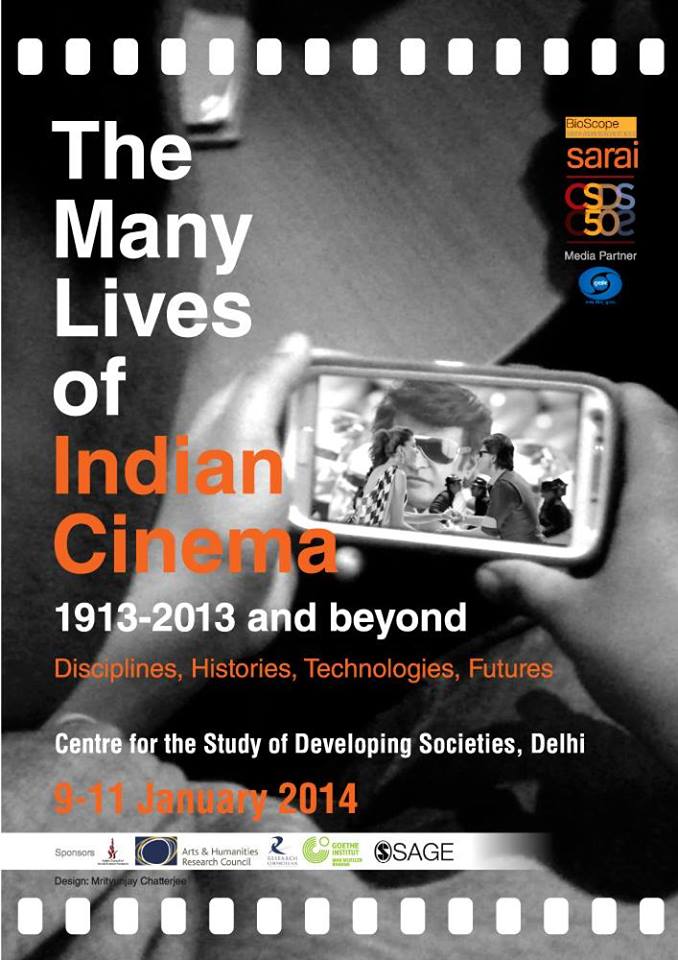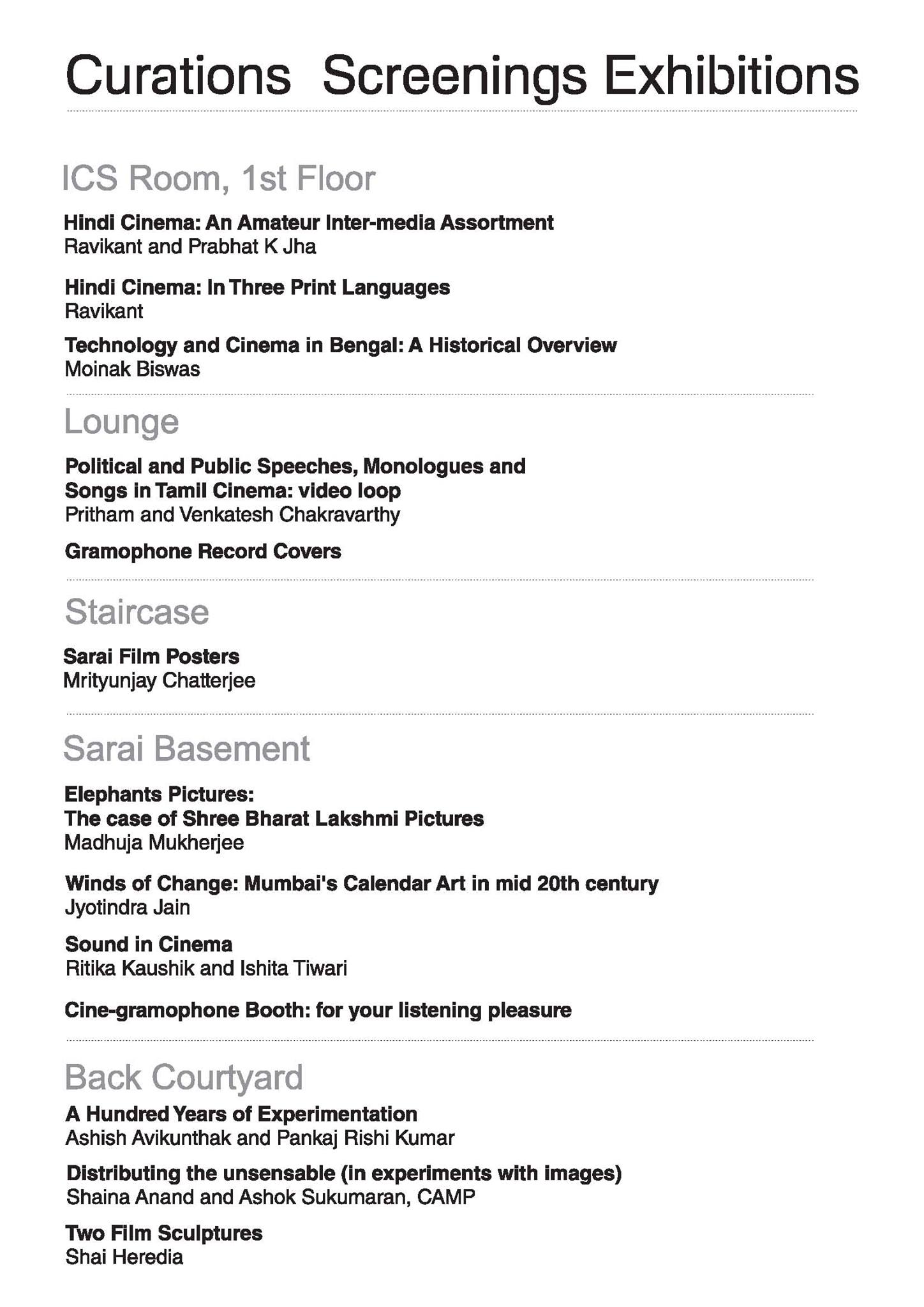This international conference was hosted by the Centre for the Study of Developing Societies (CSDS) to celebrate and reflect on a century of Indian cinema. The conference was coordinated by the Sarai programme of CSDS and the CSDS/Sarai-supported South Asian screen studies journal, BioScope. It was part of the Golden Jubilee Celebrations of the Centre for the Study of Developing Societies.
The Idea
Remembering legendary beginnings provides us the occasion to redefine and make contemporary the history we set out to honour. We need to complicate the idea of origins and `firsts’ because they highlight some dimensions of film culture and usage over others, and obscure the wider network of media technologies, cultural practices, and audiences which made cinema possible. In India, it is a matter of debate whether D.G. Phalke’s Raja Harishchandra (1913), popularly referred to as the first Indian feature film, deserves that accolade. As Rosie Thomas has shown, earlier instances of the story film can be identified, including Alibaba (Hiralal Sen, 1903), an Arabian Nights fantasy which would point to the presence of a different cultural universe from that provided by Phalke’s Hindu mythological film. Such a revisionary history is critical to our research agenda. But even if we kept to the legendary original film we may discern a different spectrum of issues. We believe that legends may be persuaded to speak in many tongues.
Dadasaheb Phalke’s Raja Harishchandra involved various trajectories. These included Phalke as magician, purveyor of popular calendar art, traveler to foreign lands and importer of the Williamson camera, maker of short and experimental films, such as the time lapse film, Birth of a Pea Plant (1912), and of industrial documentaries like Bricklaying (1922). These facts urge us to reframe the biographical legend, and place Phalke, and cinema, as more varied than their common association with the mythological, India’s iconic early film genre. And Raja Harishchandra itself points to a number of interrelated cultural forms and practices, including the numerous stage plays and nautanki performances featuring the story, the way it used painted backdrops, female impersonators and comic performers. Popular print culture, folk and proscenium theatre, craft practice and gender histories, different types of film-making and film use provide the vivid network within which the cinema emerged.
Keeping this rich and diverse context for Indian cinema in view, The Many Lives of Indian Cinema opens the study of film and related media to a wide range of disciplinary engagements.
Foci
Along with established focuses in Film Studies, we invite special attention to several areas: Cities and Cinema; Histories and Geographies of Film Culture; Film in the Intermedia Constellation; Film and the Disciplines; Documentary: Histories and Contemporary Formation; Experimentation in Cinema; Archives: Colonial and Early National; Digital Archives, Databases, and Research Practices & Screen Cultures and Information Practices.
Curations
In addition, the conference has commissioned several curations, whose themes include: 100 Years of Experimentation; Avant-Garde Short and Experimental films; Visual Culture and Cinema; Radio in Hindi Cinema; Political Speech in Tamil Cinema; Technology and Cinema in Bengal; Bengali Studio Films of the 1930s; Early Indian Film History& Sound in Cinema.
Materials and Report
Read the Conference Programme (PDF) and the Conference Brochure (PDF).
Read the Conference Report.
Acknowledgements
We gratefully acknowledge the support provided by Indian Council for Social Science Research; Arts and Humanities Research Council, UK; Research Councils UK, New Delhi; Goethe Institute, New Delhi; Indian Council for Historical Research; Sage Publications; and Doordarshan.
[clear]


